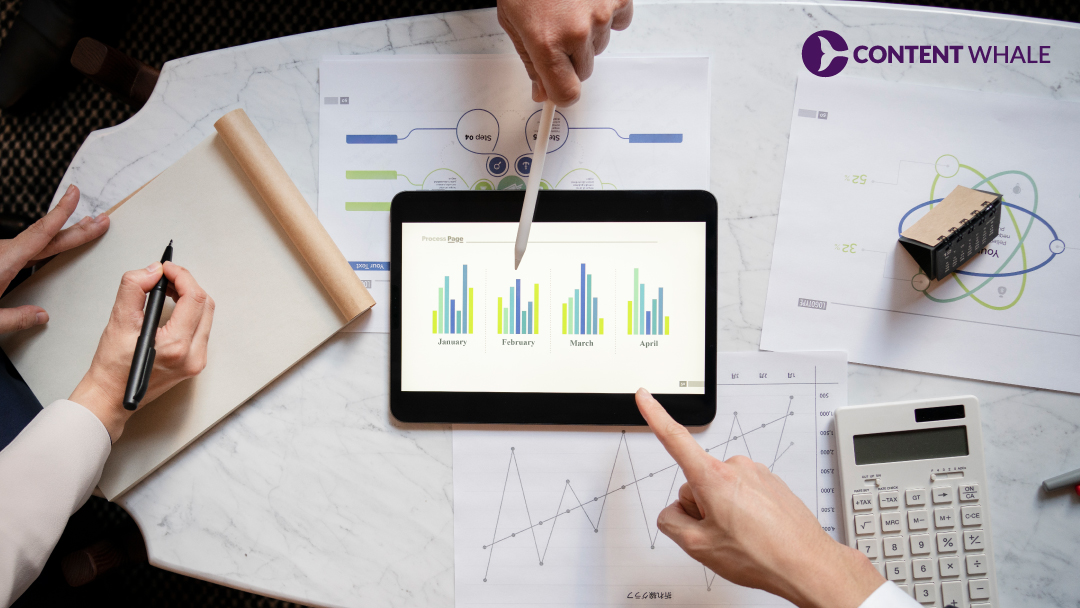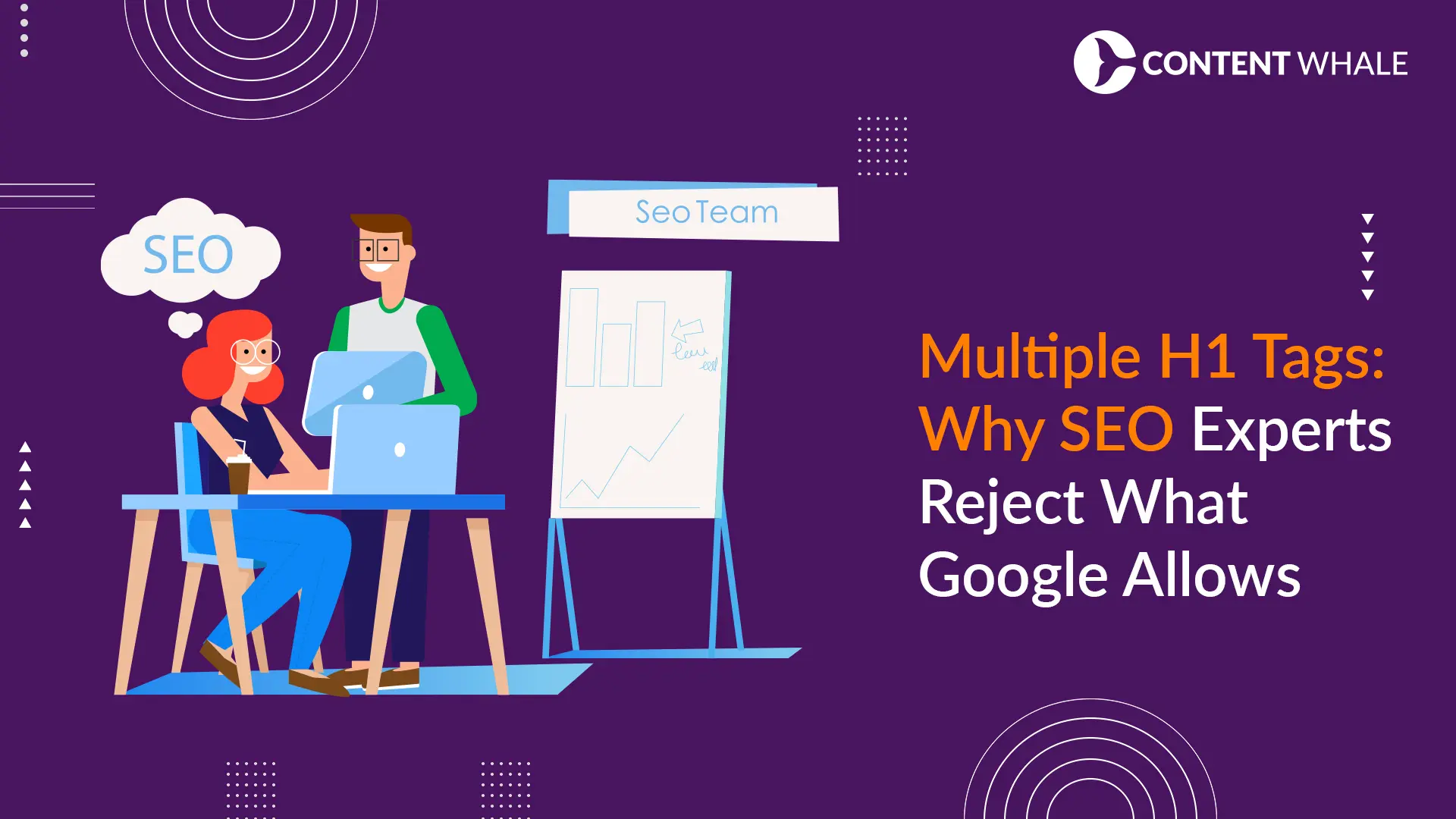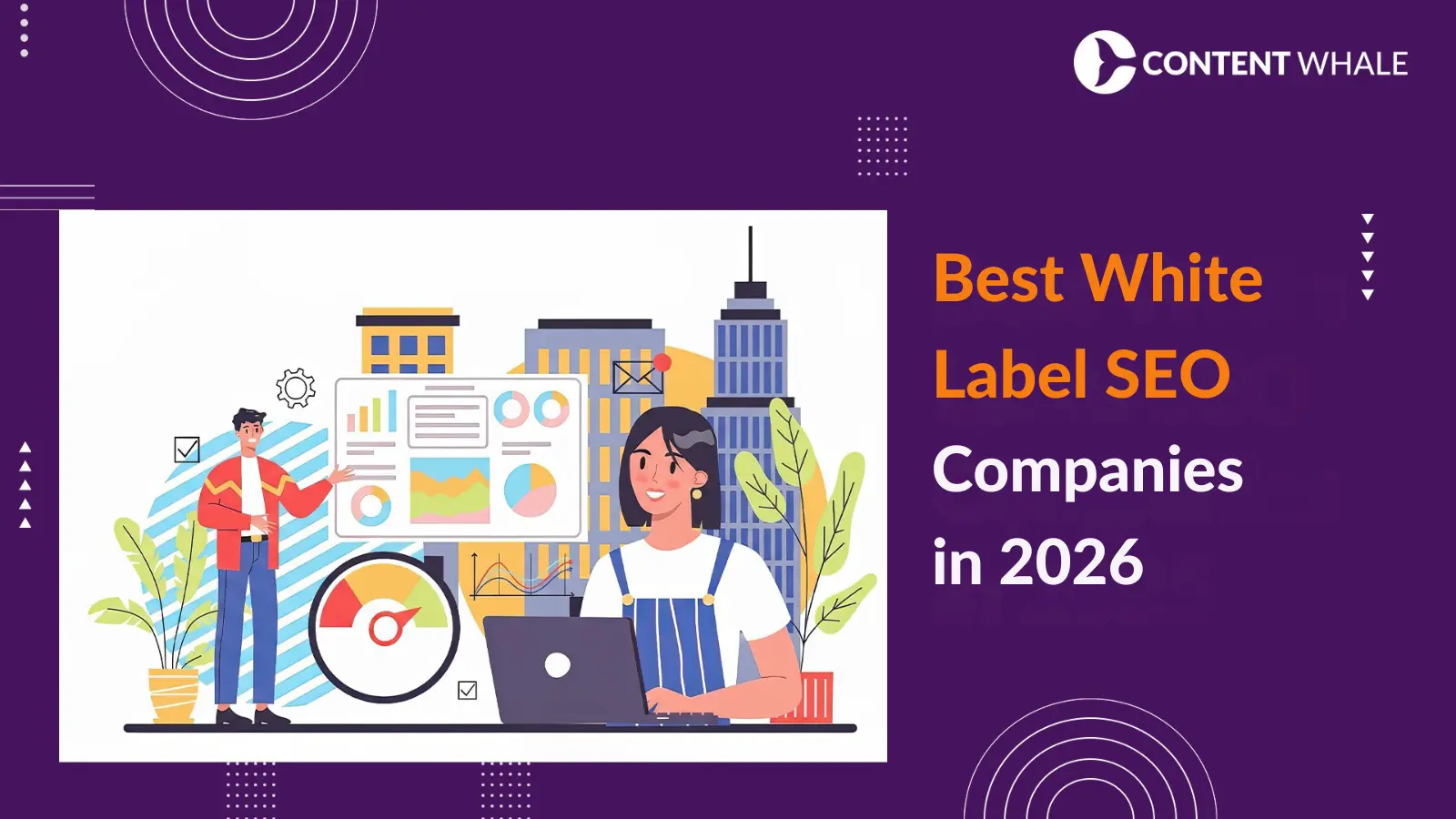Traditional marketing approaches are failing. Modern SEO content funnels drive 5% higher conversion rates than basic strategies, yet most businesses still follow outdated playbooks. Content marketing funnels now require AI-powered personalization and voice optimization to capture today’s fragmented customer journey.
You need a system that adapts to how people actually behave online. Content Whale’s experience working with diverse businesses shows how to build an SEO content funnel that converts at scale, using 2025’s latest optimization techniques and proven lead nurturing strategies that work.
What is an SEO Content Funnel?
Most marketers confuse basic sales processes with sophisticated content strategy systems. Here’s what actually works.
The Modern Definition
An SEO content funnel combines search optimization with AI-powered content marketing to guide prospects through awareness, consideration, and conversion stages. Unlike traditional sales funnels that push aggressive tactics, modern systems build trust through education and value delivery.
The customer journey has changed completely. People don’t move linearly anymore. They jump between platforms, research competitors, and make decisions across multiple touchpoints before buying anything.
How AI Changes Everything
Marketing automation platforms now use predictive analytics to score leads and personalize experiences in real-time. Your conversion funnel adapts to individual behavior patterns, showing different content based on engagement history and buying signals.
This foundation sets up the specific stages that drive results.
Understanding the 2026 SEO Content Funnel Stages
Each stage demands different tactics and content types to maximize conversions.
Awareness Stage: AI-Powered Discovery
Your prospects don’t know they need your solution yet. Voice search optimization captures 20.5% of global users who speak their queries instead of typing. Create educational content that answers “how” and “what” questions – these trigger nearly 20% of all voice searches.
Lead generation starts with blog posts optimized for featured snippets. AI-powered tools help 78% of marketers create long-form awareness content that ranks in Google’s AI Overview results. Focus on conversational keywords that match natural speech patterns.
Consideration Stage: Intelligent Nurturing
Now prospects research solutions actively. Deploy marketing automation workflows with behavioral triggers that adapt messaging based on user actions. Content marketing funnel strategies include comparison guides, case studies, and interactive content that builds authority.
Video content boosts mid-funnel conversions by 66%. Use shoppable videos and product demos to bridge the gap between interest and purchase intent. Personalized email sequences perform 202% better than generic campaigns.
Conversion Stage: Data-Driven Closing
Convert warm prospects with social proof and streamlined processes. Pages with testimonials achieve 12.5% conversion rates versus 11.4% without them. Mobile-responsive designs convert at 11.7% compared to 10.7% for non-responsive pages.
Progressive web apps and one-click checkout reduce friction. AI-enhanced product recommendations increase average order value through real-time personalization.
Now let’s explore the specific content strategies that power each stage.
Top 2026 Content Strategies for Each Funnel Stage

The right content format at each stage determines whether prospects advance or abandon your SEO content funnel.
Awareness: AI-Optimized Content Formats
Voice search drives content creation decisions. Target long-tail keywords that sound natural when spoken aloud:
- Blog posts optimized for featured snippets – 75% of marketers report AI search engines positively impact their content
- Short-form video content dominating 82% of consumer internet traffic
- Interactive infographics and AR experiences for product visualization
- FAQ pages targeting conversational search patterns
Average blog posts now reach 1,400 words, 77% longer than previous years. Content marketing teams use AI to generate ideas while maintaining human creativity for authentic messaging.
Consideration: Advanced Nurturing Techniques
Marketing automation delivers hyper-personalized experiences based on behavioral data:
- Dynamic landing pages adapting content based on traffic source and user profile
- Shoppable video content allowing instant purchasing within educational materials
- AI-powered chatbots providing real-time customer support and lead generation
- Email sequences with 13% conversion rates for pages receiving email traffic
Content strategies focus on building trust through transparency. Case studies and comparison guides perform best when they address specific pain points rather than generic benefits.
Conversion: Performance-Driven Optimization
Mobile-first design becomes non-negotiable. Content marketing funnels optimize for:
- Progressive web apps ensuring seamless mobile conversion experiences
- One-click checkout processes addressing 48% cart abandonment rates
- Social proof elements increasing conversion rates by 34%
- Retargeted ads boosting conversion rates by 147%
AI-enhanced product recommendations help retailers achieve 10-25% higher return on ad spend through real-time personalization.
These content strategies require systematic nurturing to transform prospects into customers.
Lead Nurturing Strategies for a Strong Funnel
Converting prospects demands more than great content – you need smart relationship-building systems that power your SEO content funnel.
AI-Enhanced Relationship Building
Predictive analytics transforms how you connect with prospects. Marketing automation platforms analyze user behavior to determine optimal outreach timing for your content marketing funnel:
- Deploy predictive lead scoring that adapts to changing user behaviors throughout the customer journey
- Create omnichannel marketing experiences ensuring consistent messaging across email, SMS, and social media touchpoints
- Implement dynamic content that adjusts automatically based on user location, engagement history, and behavioral patterns
- Use behavioral segmentation to segment audiences beyond basic demographics
Companies using AI in sales funnel management see 10-20% higher ROI. AI-driven analytics improve decision-making speed by 78% while predictive analytics increase forecasting accuracy by 47%.
Advanced Segmentation Techniques
Lead nurturing strategies go beyond one-size-fits-all approaches. Your SEO content funnel should target specific customer groups with personalized promotions:
- Discount-sensitive customers who might switch to competitors without price reductions
- Product preference segments showing affinity for particular solutions
- Purchasing channel preferences for customers who prefer specific buying paths
- Infrequent buyers needing different engagement frequencies
74% of marketers using AI for segmentation report improved conversion funnel performance. Inbound marketing through referral traffic achieves 10.99% conversion rates, outperforming traditional paid search channels.
First-Party Data Optimization
Privacy-compliant data collection becomes essential for content marketing funnels as third-party cookies disappear:
- Build comprehensive customer profiles using consent-based information gathering
- Create interactive content (quizzes, calculators, assessments) that provides value while collecting prospect data
- Implement progressive profiling to gradually gather customer information without overwhelming users
Zero-party data collection and contextual advertising replace traditional tracking methods. Focus on transparent data policies and meaningful consent-based interactions that strengthen your lead nurturing strategies.
Effective nurturing requires continuous measurement to optimize your SEO content funnel performance.
Tracking and Optimizing Your Content Funnel

Data drives smart decisions, but most businesses track vanity metrics instead of conversion funnel indicators that actually matter.
Essential 2026 Metrics
Your SEO content funnel demands different measurements at each stage. Track performance indicators that reveal actionable insights for your content marketing funnel:
| Funnel Stage | Primary Metrics | Industry Benchmarks | Top Performer Standards |
| Awareness | Organic traffic growth, Voice search visibility, AI Overview appearances, Social engagement rates | 20.5% global voice search usage, 37% average bounce rate, 13% SEO click-through rate | 75% positive AI search impact, 82% video traffic dominance, Featured snippet optimization |
| Consideration | Lead conversion rates, Lead generation volume, Video content performance, Email engagement metrics | 2.35% average conversion rate, 66% video conversion boost, 13% email traffic conversion | 5%+ conversion rates, 202% personalized campaign performance, Multi-touchpoint engagement |
| Conversion | Customer journey completion, Mobile conversion rates, Social proof impact, Average order value | 11.7% mobile responsive conversion, 12.5% testimonial page conversion, 10.7% non-responsive rates | 34% social proof increase, 147% retargeting ad boost, 10-25% higher ROAS |
Awareness Stage Metrics:
- Organic traffic growth and voice search visibility – 20.5% of people worldwide use voice search actively
- AI Overview appearances as search engines become increasingly AI-driven through innovations
- Social engagement rates across omnichannel marketing platforms including TikTok and Instagram
- Content reach measuring how educational material performs across multiple touchpoints
Consideration Stage Metrics:
- Lead conversion rates with industry average at 2.35% and top performers achieving 5%+ rates
- Marketing qualified lead generation numbers and email engagement statistics
- Video content performance metrics, especially since video boosts mid-funnel conversions by 66%
- Time on page and interactive content completion rates
Conversion Stage Metrics:
- Customer journey completion rates, average order value (AOV), and customer acquisition cost
- Mobile conversion optimization data – mobile-responsive pages convert at 11.7% versus 10.7% for non-responsive
- Social proof impact measurement – pages with testimonials achieve 12.5% conversion rates
Advanced Analytics Tools
Marketing automation platforms with AI-powered insights transform raw data into actionable strategies:
- Deploy heat mapping and user behavior analysis tools identifying sales funnel friction points
- Use A/B testing across all funnel stages with traffic distribution analysis for optimal performance
- Implement multi-touch attribution modeling understanding complex customer journeys across devices
84% of marketers report AI speeds up high-quality content delivery while improving decision accuracy.
Continuous Improvement Strategies
Your SEO content funnel requires ongoing optimization to maintain peak performance in 2025’s competitive environment:
- Leverage machine learning algorithms optimizing content performance and identifying emerging inbound marketing trends
- Monitor competitor content strategies and SERP changes maintaining competitive advantage in your industry
- Implement feedback loops between sales and marketing teams refining lead scoring and qualification processes
- Use predictive analytics to forecast customer behavior changes and adapt your content marketing funnel accordingly
Companies implementing comprehensive conversion funnel optimization strategies see significantly better performance, with AI-optimized approaches resulting in 525% revenue increases from AI-powered search engines.
Smart tracking reveals optimization opportunities that boost your SEO content funnel performance dramatically.
Conclusion

Most businesses struggle with fragmented marketing automation, inconsistent lead nurturing strategies, and outdated content approaches that fail to capture modern buyer behavior. They watch competitors pull ahead while their conversion funnel stagnates at industry-average rates.
Without a strategic SEO content funnel, you’re losing qualified prospects to businesses that understand AI-powered personalization and voice search optimization. Your customer journey becomes a leaky bucket where potential revenue disappears at every stage.
Content Whale transforms struggling content marketing funnels into revenue-generating systems. Our proven content strategies integrate AI automation, behavioral targeting, and omnichannel optimization to build SEO content funnels that convert prospects into customers systematically.
Let’s connect to Content Whale today and transform your stagnant funnel into a profit-driving machine.
FAQs
How does AI impact SEO content funnel performance in 2026?
AI enhances SEO content funnels through predictive analytics, personalized experiences, and automated optimization. 78% of marketers utilize AI for content creation, while AI-optimized content marketing funnels experience 525% revenue increases. AI enables real-time behavioral segmentation, dynamic content adaptation, and marketing automation that anticipates user actions within your conversion funnel.
What’s the difference between traditional and modern content funnels?
Modern SEO content funnels integrate voice search, AI personalization, and omnichannel marketing experiences, accommodating non-linear customer journeys where 70% of customers interact with multiple touchpoints. Unlike traditional approaches, modern content marketing funnels focus on education and relationship-building rather than assuming predictable conversion funnel progression.
Which content types perform best at each funnel stage?
Awareness: Voice search-optimized blogs targeting 20.5% of users, short-form videos, and AI-generated content. Consideration: Interactive content, case studies, and video content boosting conversions by 66%. Conversion: Shoppable videos, personalized demos, and social proof elements increasing SEO content funnel rates by 34% through strategic lead nurturing strategies.
How do I measure content funnel success in 2026?
Track AI Overview appearances, voice search visibility, omnichannel marketing engagement, and conversion funnel metrics. Monitor SEO content funnel conversion rates at 0.032% versus top performers achieving 5%+ rates. Include behavioral segmentation analytics, predictive analytics scoring, and multi-touch attribution modeling across your content marketing funnel performance.
What marketing automation tools are essential for lead nurturing?
AI-powered marketing automation platforms offering predictive analytics, omnichannel marketing management, and first-party data integration. Focus on tools providing real-time personalization and behavioral triggers. 92% of businesses use AI for personalization. Prioritize platforms supporting voice search optimization and lead nurturing strategies within your SEO content funnel.





